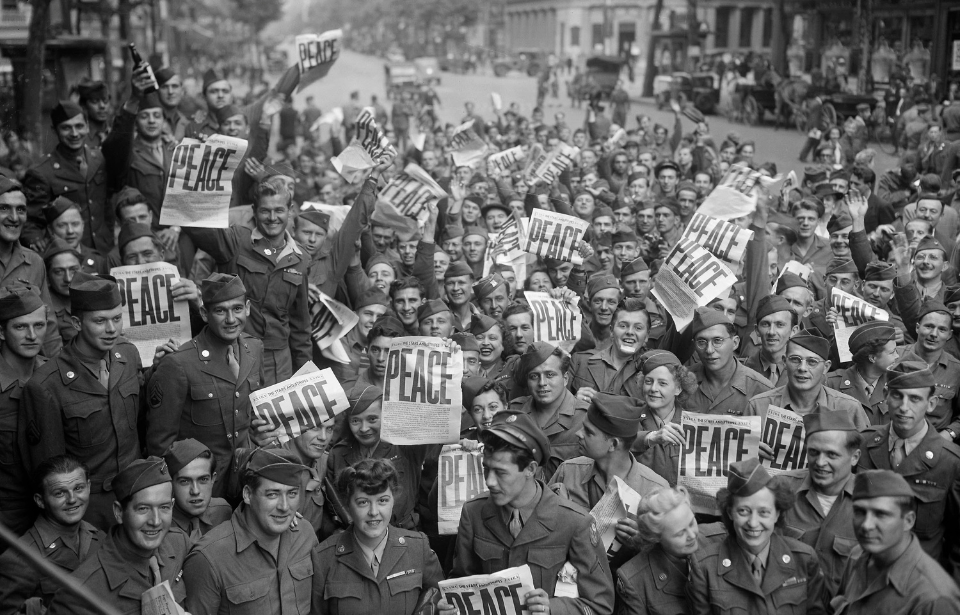The image above shows a group of American servicemen and women celebrating the Japanese surrender in front of the Red Cross pub in Paris. Many are holding newspapers with the headline reading, “Peace.” The joy on their faces is understandable, given the fierce nature of the fighting in the Pacific Theater.
Although Japan had held out against the increasingly aggressive US assaults, the atomic bombs changed all that. The dropping of Little Boy on Hiroshima on August 6, 1945 and that of Fat Man on Nagasaki on August 9 were unprecedented events that deeply shook the country, causing unimaginable destruction. They also forced Japan to seriously assess its military situation, pushing officials toward peace.
Emperor Hirohito played a crucial role in the surrender, announcing his intentions to the Allies on August 14, 1945 and making a radio broadcast to his people the following day.
Several American service members celebrated the Japanese surrender in Paris. While there’d been celebrations earlier in the year when the war in Europe ended, people were well aware that, elsewhere, the Allies were still fighting. With the victory in Japan, however, those all around the world were joyful, celebrating peace after years of fighting. Even those stationed well outside of the Pacific, including in Paris, celebrated.
An eyewitness account from Yank Magazine perhaps described the scene best: “The GIs had managed to keep their VJ spirit bottled up through most of the phony rumors, but when the real thing was announced the cork popped with a vengeance. A spontaneous parade, including jeeps and trucks and WACs and GIs and officers and nurses and enlisted me[n], snaked from the Red Cross Club at Rainbow Corner down to the Place de l’Opera and back…”
More from us: Easy Company Assigned to Occupation Duty At the Eagle’s Nest
Despite fighting coming to an end in August, it wasn’t until September 2, 1945 that the official peace between nations was signed. Aboard the USS Missouri (BB-63) in Tokyo Bay, high-ranking Japanese and Allied officials witnessed the Japanese Instrument of Surrender, which saw the fighting come to an end and Allied forces begin their occupation of the once-hostile nation.
